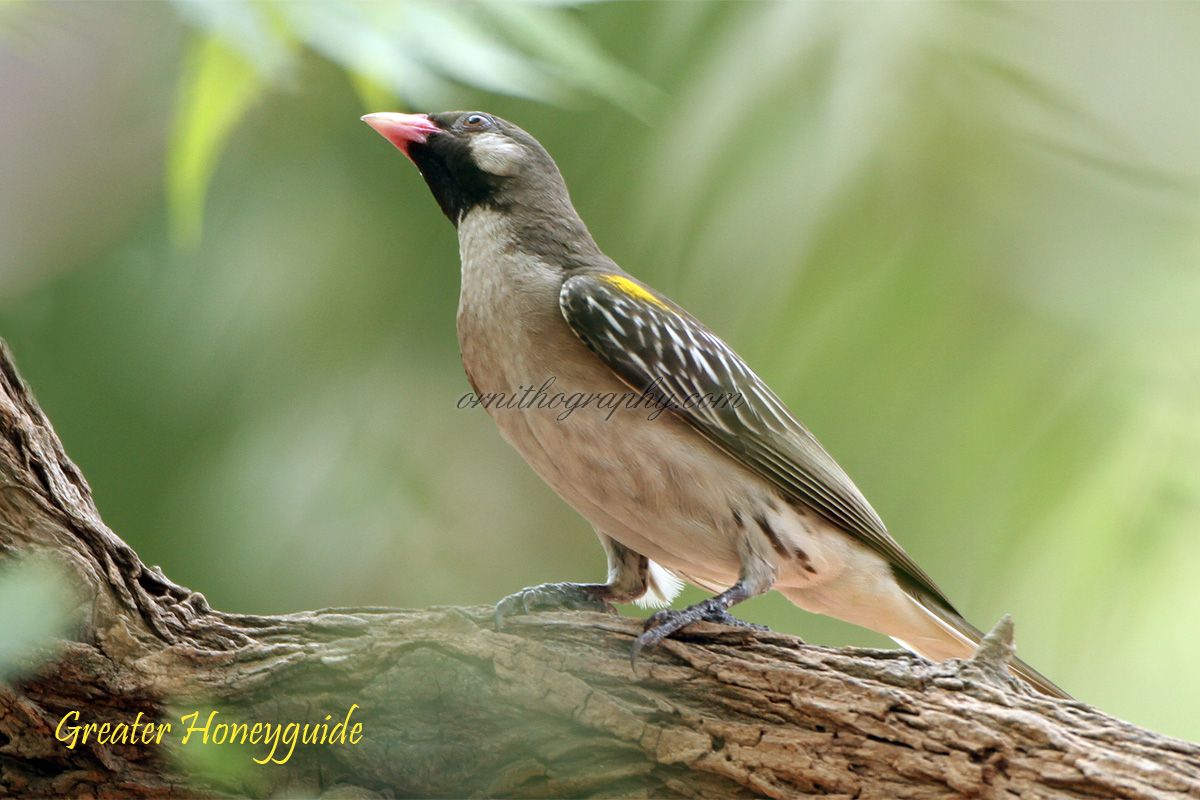
Indicator indicator
TAXONOMY
Indicator indicator Sparrman, 1777.
OTHER COMMON NAMES
English: Black-throated honeyguide; French: Grand Indicateur;
German: Schwarzkehl-Honiganzer; Spanish: Indicador de Garganta
Negra.
PHYSICAL CHARACTERISTICS
Up to 8 in (20 cm). Sexes show only minor differences; male is
olive-brown on the crown, nape, wings and dorsal surface;
black throat patch extends up around the eyes in a mask. Yellowish
patch on cheek area, another on the wing where it
meets the shoulder at rest; underparts are whitish with some
grayish touches. Bill is yellow and pink. Female is more
brownish and lacks throat and cheek patches. As in most honeyguides,
the outer retrices of the tail are white in both sexes
and are shown to advantage in flight.
DISTRIBUTION
Nearly all tropical and temperate Africa south of the Sahara;
the most widely distributed species.
HABITAT
Dense bush country, grasslands with scattered trees and
bushes, and dense forest, from sea level to 8,000 ft (2,438 m)
above sea level. They prefer territory with large resident aardvark
(Oryctoperus afer) population. Ratels shelter in aardvark
burrows, while bee-eaters (Melittophagus spp.), ant-eating chats
(Myrmecochlica spp.), and swallows, all parasitized by the greater
(and other) honeyguides, nest in the roofs of the burrows.
BEHAVIOR
Large for a honeyguide, lively and aggressive. Individuals patrol
known territories, visiting and spot-checking bee nests,
and keeping their senses alert for new ones. They will also follow
humans and visit human campsites, not always for beckoning
and guiding. The male’s most oft-heard call is “vic-tor,”
repeated from six to 11 times in rapid staccato, perching erect
with throat feathers slightly puffed out.
FEEDING ECOLOGY AND DIET
Diet is typically wax, bee larvae, other insects, and spiders.
Greater honeyguides and scaly-throated honeyguides are the
only species known to guide animals, including humans, to
honey sources.
REPRODUCTIVE BIOLOGY
Males put on aerial attraction displays for females, simplified
versions of the lyre-tailed honeyguide’s performance. The
greater honeyguide male may also put on an act wherein he
circles around and above a female, making drumming sounds
with his wings. The male will alight on a branch near the
perching female, then slowly approach her, spreading his
white-bordered tail, fluttering his wings, puffing his feathers,
and making a low, “chrrr” call. Females parasitize at least 40
species, including barbets, kingfishers, bee-eaters, hoopoes, and
woodpeckers.
CONSERVATION STATUS
Not threatened.
SIGNIFICANCE TO HUMANS
Helps humans secure a treasured food and plays a significant
role in folklore.
Photo Gallery of - Greater honeyguide




 Animalia Life
Animalia Life